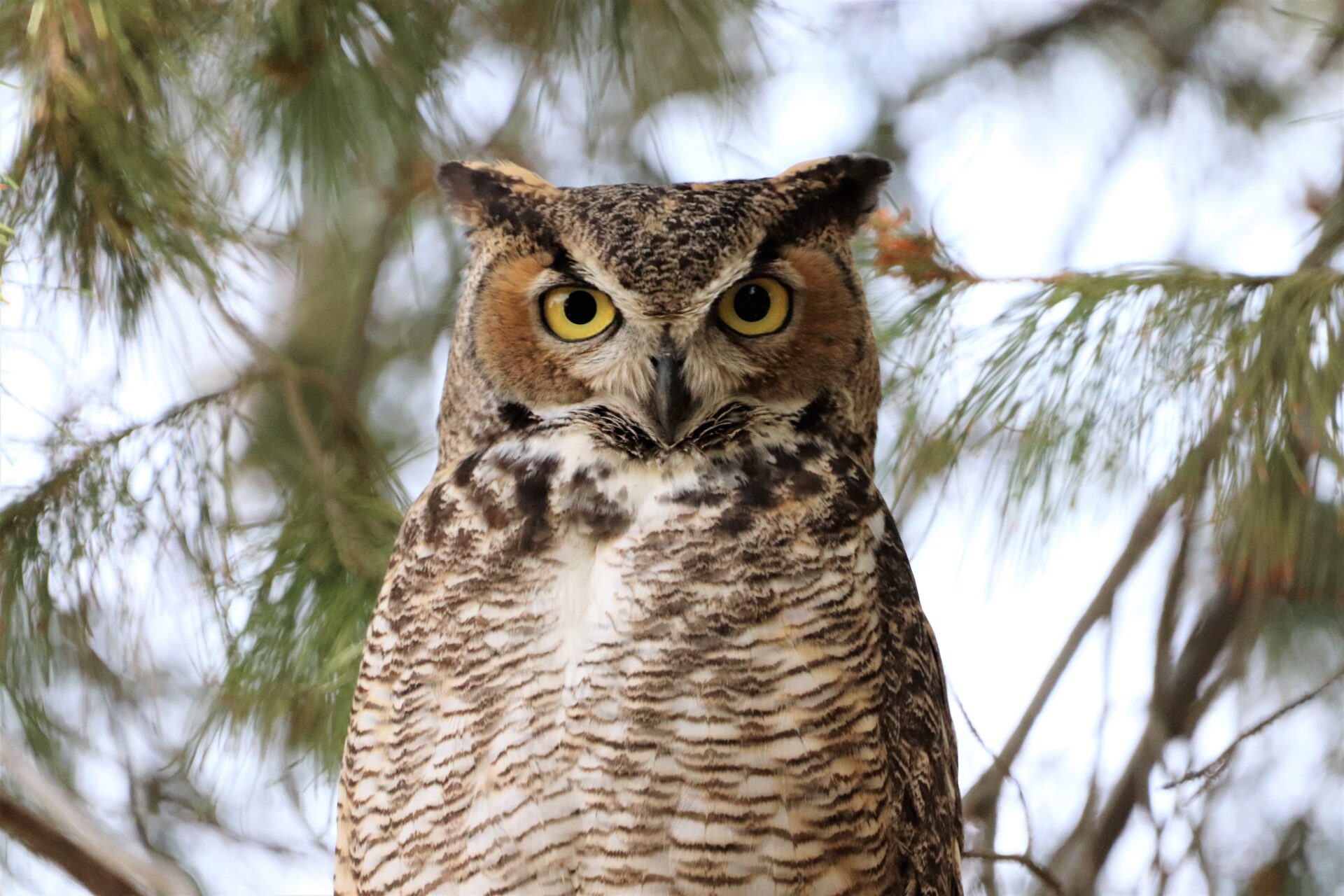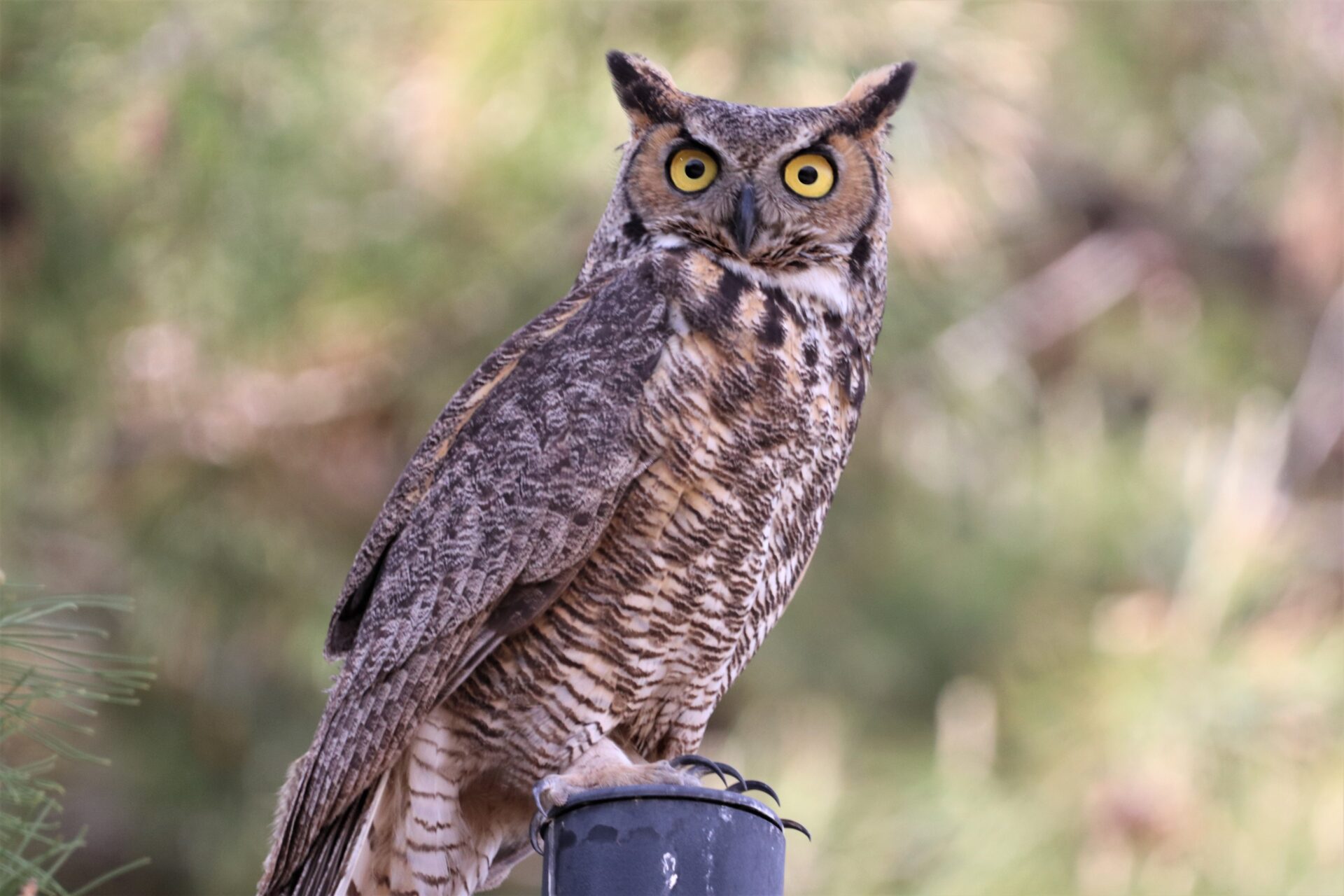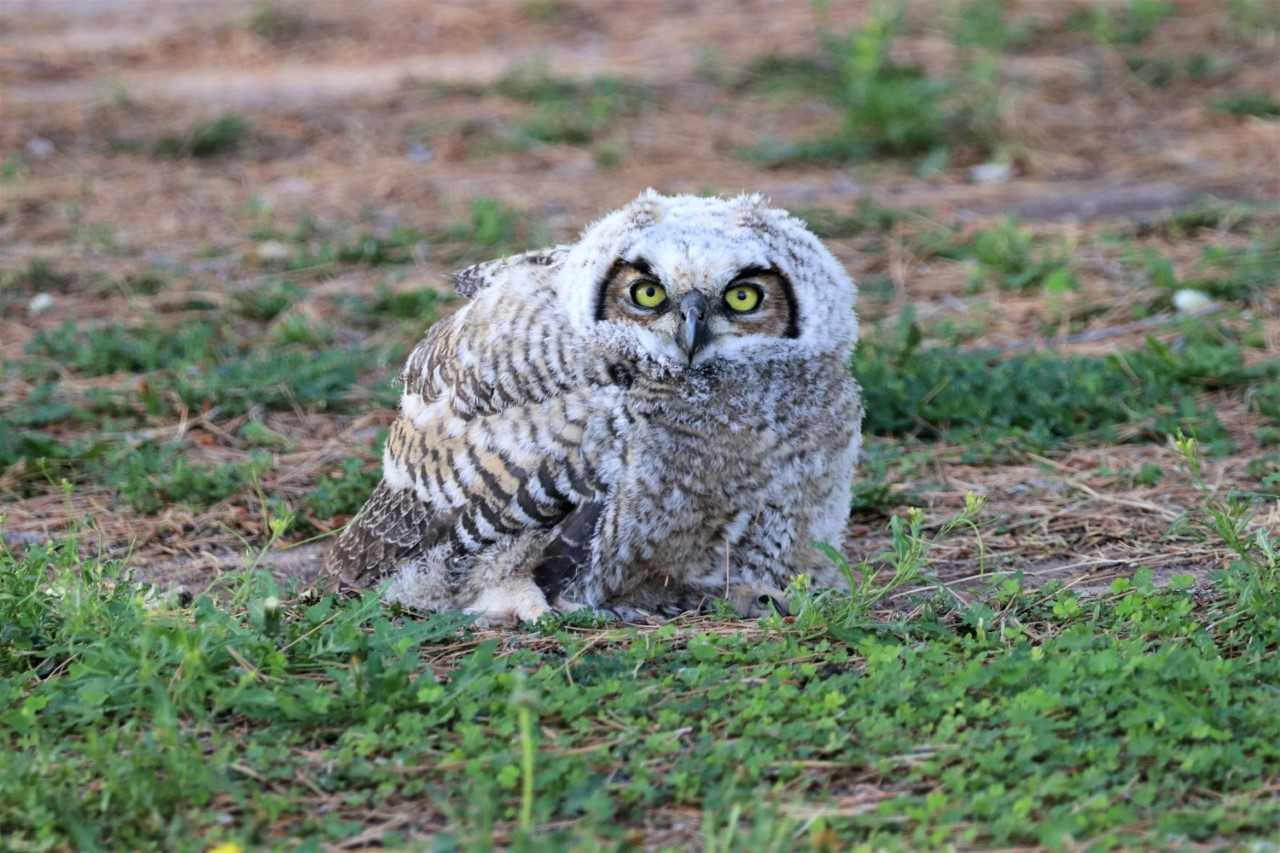
By Sally Mesarosh, Special for Wrangler News
If you’ve heard deep, soft hoots as dusk approaches, chances are there might be a great horned owl nearby. Urban dwellers often think they need to live or travel to a remote rural area to see an owl, but in fact, many East Valley residents could possibly have owls for neighbors.
Owls are nocturnal, active from dusk until dawn. As we wind down from our day, some owls are just waking up and leaving their nests to begin their day.
Ronald Reed Sill and other local bird enthusiasts say they have seen great horned owls at Desert Breeze Park in West Chandler.
“I was not surprised to see owls in the neighborhood park,” said Sill of Chandler. “Owls have always co-existed in neighborhoods.”
Cathy Wise, community science manager at Audubon Southwest in Phoenix, agrees that it’s not rare to find great horned owls in a suburban neighborhood park.
 “Great horned owls are extremely opportunistic and make use of a wide array of habitats,” Wise said. “Although they are very powerful predators, they can adapt readily to whatever food sources are available: insects, rodents, birds, even skunks. This flexibility makes it possible for them to live and nest in a wide array of habitats, even in suburban and urban areas. They don’t like dense, unbroken forests but other than that are widespread throughout the country.”
“Great horned owls are extremely opportunistic and make use of a wide array of habitats,” Wise said. “Although they are very powerful predators, they can adapt readily to whatever food sources are available: insects, rodents, birds, even skunks. This flexibility makes it possible for them to live and nest in a wide array of habitats, even in suburban and urban areas. They don’t like dense, unbroken forests but other than that are widespread throughout the country.”
Birders who have seen owls at Desert Breeze Park hesitate to reveal the exact location of the nest to prevent crowds of people from gathering.
“I am not an expert on how to protect them,” Sill said. “But I know to give them plenty of space when it’s nesting season to not stress them out. I always use a long telephoto lens when photographing them to keep my distance.”
Wise said great horned owls typically do not build their own nests but take over structures abandoned by hawks and ravens.
“The pair might do a little fine-tuning—adding a stick here or there—but prefer the ‘turn-key’ scenario,” Wise said. “If they can successfully nest in an area, they will return year after year until conditions become unfavorable. It is not uncommon for homeowners to set their calendars by the reappearance of an owl pair in late fall/early winter. Most people enjoy the company of the owls and like watching the progress of the nest.”
Great horned owls are believed to be the most common owl species in the Valley, according to Wise, followed by western screech-owls, barn owls and elf owls.
“Although it isn’t possible to provide an exact number, biologists agree that the species is widespread, and numbers are stable,” Wise said. “Because of this bird’s adaptable nature, the species has fared better than more specialized species in recent years.”
Sill said that as a photographer and a birder, it’s always a great treat to see the owls.
“Owls are not birds you see too often,” Sill said. “It’s always nice to see them.”
What should you do if you find an injured owl or baby owl out of the nest?
Wise said it’s not uncommon for young, feathered birds to jump from the nest before they are ready, and to end up on the ground.
“If adult owls are present, they will continue to feed the youngster, and if you are in a safe location (no dogs or other potential predators, including people) you can let nature take its course,” Wise said.
But watch closely.
 “If the baby is still downy or injured, call Liberty Wildlife and explain the situation.”
“If the baby is still downy or injured, call Liberty Wildlife and explain the situation.”
In some cases, the wildlife center will recommend replacing the owlet in the nest, but it is recommended you talk to Liberty Wildlife first.
“After all, owl parents do a better job than humans can do,” she said. “If a visible injury is present, or parents have abandoned the nest, the rehab center will recommend collecting the bird gently, keeping it in a dark, draft free place and transporting it to the center.”
For assistance, contact Liberty Wildlife at 480-998-5550.


